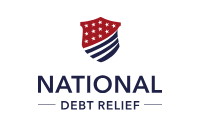Passive vs. Active Investing: Which Strategy Works Best?

When building your investment strategy, a critical decision arises: should you choose passive investing, actively manage your portfolio (active investing), or perhaps combine both strategies? Both approaches offer unique benefits and challenges, significantly impacting your investment outcomes and long-term financial goals.
In this comprehensive guide, you’ll learn the key differences between passive and active investing, their respective benefits and risks, and how to determine the best approach for your financial situation.
What is Passive Investing?
Passive investing is a long-term investment strategy designed to replicate market performance rather than attempting to outperform it. Investors typically use low-cost index funds or Exchange-Traded Funds (ETFs) to match market indices, such as the S&P 500 or Dow Jones.
Benefits of Passive Investing:
- Lower Costs: Passive funds have significantly lower fees (expense ratios) compared to active funds, maximizing long-term returns.
- Reduced Risk: Diversification across numerous securities reduces overall volatility and risk.
- Simplicity: Easy to implement, manage, and maintain, ideal for beginner investors or those wanting minimal hands-on involvement.
Drawbacks of Passive Investing:
- Limited Flexibility: You can’t actively adjust your portfolio during market volatility or economic shifts.
- Market Average Returns: Passive investing matches market returns but never outperforms them.
What is Active Investing?
Active investing involves frequent buying and selling based on market conditions, research, analysis, and economic forecasts, aiming to outperform market benchmarks. This strategy typically requires significant time, research, and investment knowledge.
Benefits of Active Investing:
- Potential for Higher Returns: Successful active investors can significantly outperform passive strategies.
- Flexibility: Investors can quickly adjust portfolios based on changing market conditions, potentially mitigating losses during downturns.
- Customized Portfolios: Investors tailor portfolios specifically to personal goals, risk tolerance, and market insights.
Drawbacks of Active Investing:
- Higher Costs: Active management involves higher fees and trading costs, reducing returns.
- Greater Risk: Frequent trading increases portfolio volatility and risk exposure.
- Time-Intensive: Requires extensive research, continuous monitoring, and significant expertise.
Passive vs. Active Investing: Key Differences
Clearly compare passive and active investing strategies:
| Feature | Passive Investing | Active Investing |
|---|---|---|
| Goal | Match market returns | Outperform the market |
| Management Style | Hands-off, minimal effort | Hands-on, research-intensive |
| Costs & Fees | Low fees, minimal transaction costs | Higher fees, transaction costs |
| Time Commitment | Minimal | Significant, ongoing |
| Risk Exposure | Lower risk through diversification | Higher risk due to active trading |
Choosing Between Passive and Active Investing
Your ideal investing strategy depends primarily on your personal situation:
Choose Passive Investing If You:
- Want consistent, reliable market returns.
- Prefer minimal investment management and low fees.
- Have limited investment experience or time for managing portfolios.
Choose Active Investing If You:
- Aim to beat market performance consistently.
- Enjoy investment research and actively managing your portfolio.
- Are comfortable taking higher risks for potential higher returns.
Combining Both Approaches: A Hybrid Strategy
Many investors successfully combine both passive and active strategies, utilizing passive investments as the core of their portfolios while adding actively managed funds or individual stocks for targeted growth opportunities.
Additionally, incorporating alternative investments—such as precious metals through a Gold IRA—offers valuable diversification, economic stability, and protection against market volatility. Gold IRAs complement passive and active strategies, creating a balanced, resilient investment portfolio.
Common Mistakes to Avoid
Avoid these common mistakes when choosing your investing approach:
- Ignoring fees: Always consider costs, especially when choosing active investments, to maximize your returns.
- Frequent trading: Excessive trading in active investing increases risk and costs significantly.
- Neglecting diversification: Diversify strategically across asset classes, sectors, and alternative investments like a Gold IRA for maximum stability.
The Bottom Line: Which Strategy is Best?
Choosing between passive and active investing depends on your goals, risk tolerance, financial knowledge, and time availability. Passive investing offers simplicity, affordability, and reliable returns. Active investing provides flexibility, customization, and potential outperformance—but with greater risk and effort.
For most investors, combining passive strategies (index funds, ETFs) with active elements (individual stocks or funds) and stable alternatives like precious metals held in a Gold IRA offers the best balance, providing growth potential, risk management, and long-term financial security.
Explore Our Categories

Credit Cards

Debt

Loans

Insurance

Retirement

Home Buying

Investing

Taxes
Free Yourself From Debt

National Debt Relief
✅ Reduce Your Debt – Pay Less Than You Owe!
✅ One Simple Monthly Payment – No More Juggling Bills.
✅ Get Relief From Credit Cards, Medical Bills & More
Ranked #1

